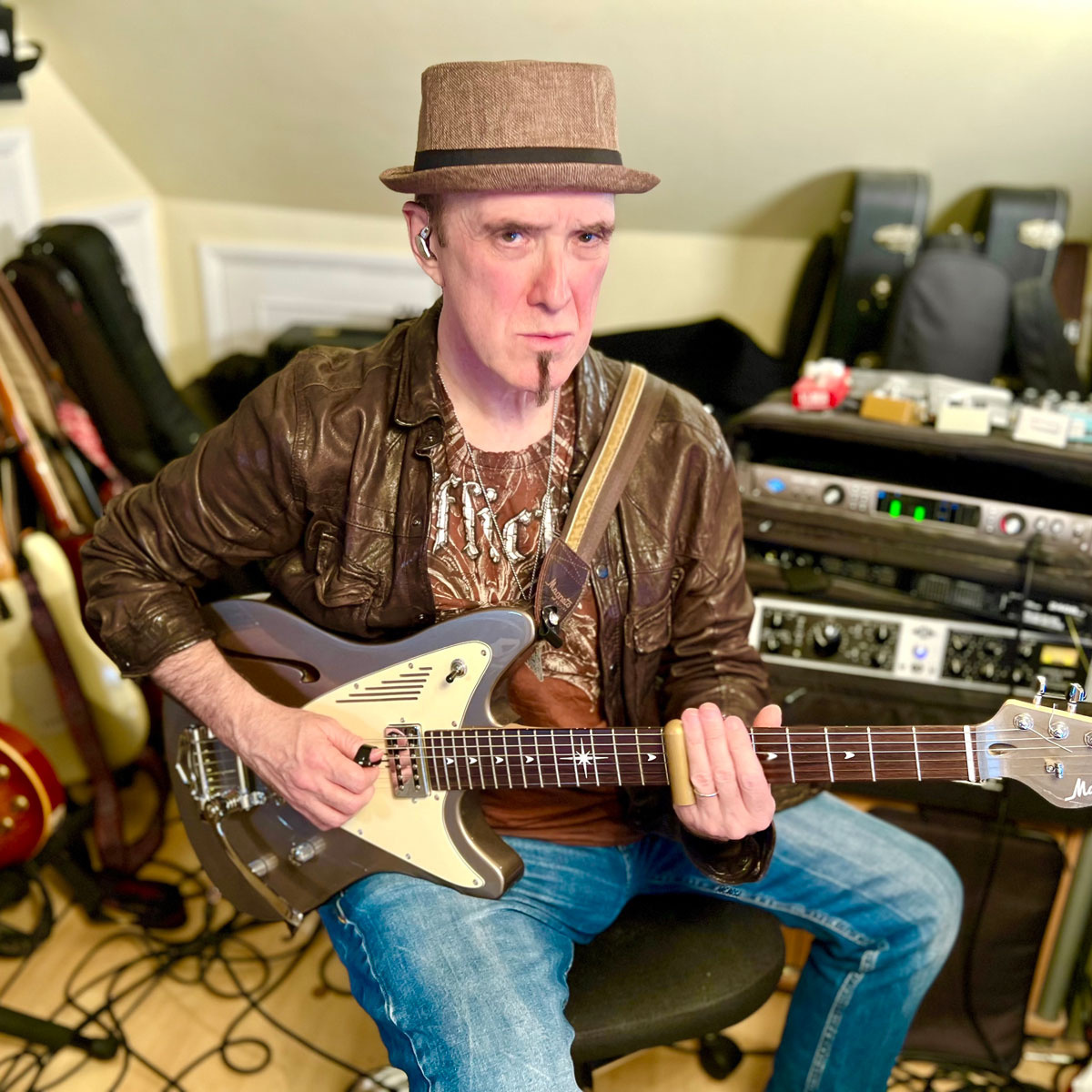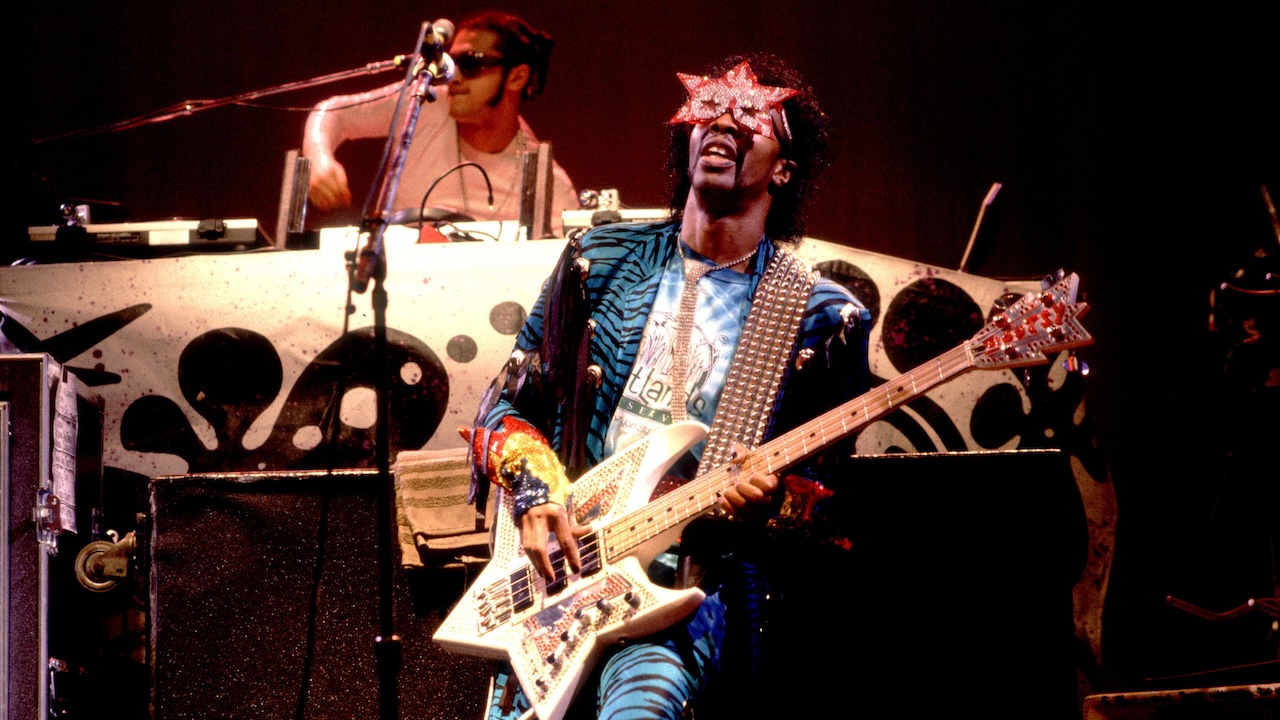He’s played with Michael Jackson, Elton John and three of the Beatles, and was a world-class soloist while still in his teens – why Toto guitarist Steve Lukather is one of rock’s greatest players
Lukather's style is a case study in rhythmic variation, chromaticism and on-point phrasing that references the familiar but takes you someplace else

Beloved by fans all over the world, ‘Luke’ is a legendary player. Among countless A-list recording sessions, he has played with Michael Jackson, Boz Scaggs, Lionel Richie, Earth Wind And Fire, Joe Cocker, Michael Bolton, Aretha Franklin, Peter Frampton and countless others.
He’s also worked with Elton John, played with three of The Beatles, and is currently a member of Ringo’s All-Starr Band. Steve’s technique is legendary, and he was already making a name for himself as a world-class soloist while still in his teens.
Rhythmic variety is a big part of his style, mixing up different kinds of rhythms to add drama to his solos. The use of sextuplets is a big facet of this, as playing in groups of six means that the chord tones will fall differently compared to when playing in groups of four or eight notes.
If you were to play a bebop line that’s meant to be played in groups of four but presented the notes in groups of six, the harmonic feel would be completely different.
Therefore the lines that you play in sixes need to be designed with thought in order to fit the harmony. Of course you don’t always have to land chord tones on the beat, but this is a consideration. Our examples and the sample solo feature many sextuplets.
Steve’s string-bending chops are pretty insane – just check out the second solo in Rosanna by Toto. One of our examples here pays tribute to that approach but I was merciful with the pacing of the idea.
Steve often makes use of chromaticism, a bold strategy on modern pop-rock records, yet always makes it sound exciting and appropriate. His use of chromaticism is sophisticated but doesn’t venture into be-bop vocabulary.
All the latest guitar news, interviews, lessons, reviews, deals and more, direct to your inbox!
He has a jazzy way of working between the chord tones but never attempts to shoehorn jazz lines in where not required. He will use melodic 3rds in semitones which land on consonant notes over the chords. He’s also a big fan of Eddie Van Halen, so you’ll find some picking-hand tapping along with other expressive techniques mentioned here.
Lukather is an incredibly imaginative rhythm guitarist, too. For a great example of this aspect of his work, check out Boz Scaggs’ album Middle Man. Steve came up with remarkable guitar textures which work beautifully with the other guitarist on the record – Ray Parker Jr.
The track Breakdown Dead Ahead features a classic Lukather solo with some killer bends and characteristic chromatic 3rds. And what about his amazing breaks in Lionel Richie’s Running With The Night, and Randy Crawford’s You Might Need Somebody? The list goes on and on…
Get the tone
Amp Settings: Gain 9, Bass 6, Middle 4, Treble 7, Reverb 3
Steve has been wedded to his Music Man ‘Luke’ models in various pickup configurations and finishes for many years. He uses Bogner Ecstasy tube amps and Strymon (among others) pedals.
Go for a deep, clean rhythm tone with some nice modulation and delay, and a heavily overdriven lead sound where the notes remain clearly defined. Add digital delay and reverb to taste.
Example 1
This line works chromatically around the intervals of the F chord but in a lovely bluesy manner. This approach continues with the use of the relative F minor/F blues scale over the Ab chord. Take this in small sections to both master the notes but also for you to hone in on phrases that you’ll particularly want for yourself!
Example 2
This features a major 3rd (four-fret) bend and weaves a line in sixes ending with 3rd intervals moving chromatically to resolve in bar 4. It’s classic Lukather.
Example 3
We introduce tapping to add a little more flash. Steve doesn’t do a lot of this (in part to respect his friend, Eddie Van Halen) but when he does it sure hits home!
Example 4
This line extends the tapping idea by turning up the heat a little, so take it slowly until you perfect it. Note the bend from the 6th to the b7 in bar 4 – tasty!
Example 5
This line starts with alternate picking but moves into a sliding motif that works its way down the neck. Note the chromatic notes that target chord tones.
Example 6. The Solo
The solo ties together many of the examples’ approaches. You’ll find a lot of Steve’s natural bluesiness throughout but there also many instances of chromaticism.
A professional guitarist for many years, Andy G Jones has played with Van Morrison, James Ingram, Lamont Dozier, Queen (Brian May and Roger Taylor), Robben Ford, Billy Cobham, John Illsley (Dire Straits), KT Tunstall, Albert Lee (featured on Andy's upcoming CD), Mike Finnigan, Dave Landreth and Ryan Voth from The Bros. Landreth, Malford Milligan, The BBC Radio Big Band, Patti Austin, Hamish Stuart (Average White Band), Lalo Schifrin (Hollywood film composer Bullitt, Mission Impossible), Hank Marvin, James Dean Bradfield (the Manic Street Preachers), Grady Tate, Agnetha from ABBA, Cliff Richard, Dudley Moore, Nathan James (Inglorious), Joey Tempest (Europe) and Kelsey Grammar.



